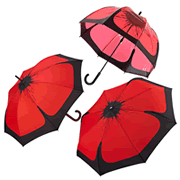A Guide to British Awards for Gallantry or Meritorious Service in WW1

There are a number of awards which an individual might receive for a conspicuous and gallant act of valour, usually in the presence of the enemy, whilst serving in the British, Dominion and Colonial armed forces during the First World War. Also, there were awards issued for distinguished and meritorious service.
The following WW1 awards are listed below in order of precedence:
- Victoria Cross (V.C.)
- Distinguished Service Order (D.S.O.)
- Distinguished Service Cross (D.S.C.)
- Military Cross (M.C.)
- Distinguished Flying Cross (D.F.C.)
- Air Force Cross (A.F.C.)
- Distinguished Conduct Medal (D.C.M.)
- Conspicuous Gallantry Medal (C.G.M.)
- Distinguished Service Medal (D.S.M.)
- Military Medal (M.M.)
- Distinguished Flying Medal (D.F.M.)
- Air Force Medal (A.F.M.)
- Meritorious Service Medal (M.S.M.)
- Mentioned in Despatches (M.I.D.)
- Citation for a Gallantry Award
Victoria Cross (V.C.)
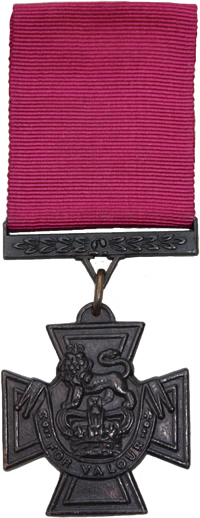
(Level 1 Gallantry Award)
This is the highest award for gallantry. It is awarded for an act of outstanding courage or devotion to duty in the presence of the enemy. All ranks were, and still are, eligible when serving with the British and Commonwealth armed forces.
The Royal Warrant for the award of the Victoria Cross has essentially remained the same since the inception of the medal to the present day. It was, and still is, awarded “for most conspicuous bravery, or some daring or pre-eminent act of valour or self-sacrifice, or extreme devotion to duty in the presence of the enemy.” (1)
The Victoria Cross can also be awarded to civilians if they were under military command at the time of the act of bravery.
The George Cross (G.C.) is an equivalent award but is made to an individual, military or civilian, who has carried out an act of special courage when not in the face of the enemy.
Origin of the Victoria Cross
The Victoria Cross was instituted on 29th January 1856.
At the time of the Crimean War (1853-1856) the British military - which consisted of the Royal Navy and the Army - did not have a gallantry medal open to all ranks. The idea was put forward to the British House of Commons by a Member of Parliament and ex-Royal Navy man, Captain T Scobell. It was also suggested as an idea by the then Secretary of State, the Duke of Newcastle.
His successor, Lord Panmure, carried on with the correspondence about the new gallantry medal already established with Prince Albert. Queen Victoria was very interested in the medal, especially as it was to be named after her. She preferred the name of “Victoria Cross” to the suggested title of “The Military Order of Victoria”. Victoria involved herself by making suggestions about the design and the metal it could be made of. She was the person who suggested that the design should bear the words “For Valour” instead of the suggested words “For the Brave”. The word “valour” extended a special significance to an act of extra special bravery and courage, which might be considered to be more than an act of “bravery”.
Queen Victoria did not like the original copper cross which was submitted for approval. A suggestion was made to create the medal from the cascabels (the knob and the neck of a breech-loading cannon) of two Russian cannons captured in the Crimea. As has been examined in a recent study(2), the two 18 pounder cannons which were provided for creating the Victoria Cross medals were Chinese in origin, not Russian. One theory is that the guns were captured by the Russians from the Chinese and used against the British Army in the battle at Sevastopol. It has also been suggested that the metal used for the Victoria Crosses cast during the First World War did not come from these two original cannons, but from other Chinese guns captured in the Boxer Rebellion (1898-1901).
The Royal Warrant for the Victoria Cross was issued on 29th January 1856. The first investiture ceremony was held a few months later in Hyde Park on 26th June 1856. 62 awards were issued for acts of valour during the Crimean War (1853-1856).
There is approximately 10kg of remaining metal from the two cascabels of the original cannons reputed to have come from Sevastopol. This is stored in a secure vault and can only be taken out of the vault under an armed guard. The same jewellers, Hancocks of London, has been responsible for casting the Victoria Cross medal from the first one to the present day.
The Crimson Medal Ribbon
Until April 1918 the medal ribbon issued with the Victoria Cross medal was red (or crimson) for Army recipients and blue for Navy recipients. When the Royal Air Force was formed on 1st April 1918 it was decided that recipients from all of the three Services should wear the crimson ribbon with the medal.
From 22nd May 1920 King George V stated in a warrant that all recipients would wear the crimson ribbon. Recipients in the Royal Navy who had already received the blue ribbon were also to wear the crimson ribbon from then on.
Awards of the Victoria Cross in WW1
There were 615 Victoria Crosses awarded during the First World War. WW1 awards of the Victoria Cross were:
- 415 awarded to the British Army
- 51 to the Navy and Marines
- 9 to the Royal Flying Corps and Royal Air Force
- 140 to the Dominion Forces.
Victoria Cross and Bar
Prior to April 1917, if a second award of a Victoria Cross (a Bar) was made to one individual, they were to wear a miniature cross on the ribbon strip to indicate the second award. In an Army Order of April 1917 this was changed so that a miniature cross would be worn on the ribbon strip to indicate the award of the first VC, with another miniature for the second VC award (the Bar). If further awards were issued to that same individual then additional miniature crosses would be worn on the ribbon strip as appropriate. To date there have been no awards of more than two Victoria Crosses to one individual.
In the First World War two Victoria Cross recipients were recommended for a second award (a Bar). They were both officers serving with the R.A.M.C.: Lieutenant A Martin-Leake and Captain N G Chavasse, MC.
Recommendation for a Victoria Cross
A regimental officer will usually make the recommendation and it should be supported by three witnesses. The reigning king or queen will be presented with the recommendation and he or she will sign an approval.
In the event that a group of service personnel in a squadron, detachment or a ship's company should be recommended as equally deserving of a recommendation for the award, a name is drawn by ballot.
Posthumous Awards of the Victoria Cross
Originally the Royal Warrant for the award did not cover the issue of the award posthumously. Although this was not officially changed in the warrant until after the First World War, a quarter of those recipients who were awarded the Victoria Cross during WW1 were killed as they carried out their deed of valour.
Distinguished Service Order (D.S.O.)
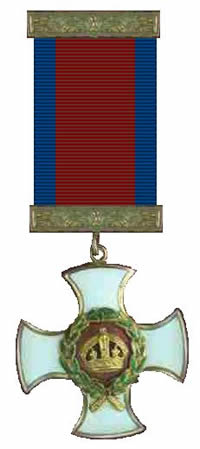
(Level 2 Gallantry Award)
The D.S.O. was instituted by Royal Warrant on 6th September 1886.
The D.S.O. was originally instituted as an award for officers of the British Army and Commonwealth Forces, usually at the rank of Major. It was, however, also awarded to officers at a rank above or below Major. The D.S.O. could be awarded for an act of meritorious or distinguished service in wartime and usually when under fire or in the presence of the enemy. It was also made available for officers at the equivalent rank in the Royal Navy and, from 1st April 1918, the Royal Air Force.
Between 1914 and 1916 the D.S.O. was also awarded to some Staff officers when they were not under fire or in contact with the enemy. This was not well received at the time by officers who were in the field.
From 1st January 1917 it was restricted to recommendations for individuals who were in the presence of the enemy. The award was generally given to an officer in command, but some were awarded to junior officers below the rank of Captain.
Almost 9,000 D.S.O.s were awarded during the First World War. On 23rd August 1916 a Warrant enabled a recipient to be awarded a Bar for an additional award of the D.S.O.
The medal was issued without the name of the recipient being engraved on it, but some medals do bear the name of a recipient engraved on the reverse of the suspension bar. The recipient of a D.S.O. is known as a Companion of the Distinguished Service Order and is entitled to use the letters D.S.O. after his name.
Distinguished Service Cross (D.S.C.)
(Level 3 Gallantry Award)
Instituted 15th June 1901 as the Conspicuous Service Cross and renamed in October 1914 the Distinguished Service Cross.
The D.S.C. was awarded to naval officers below the rank of Lieutenant Commander for gallantry at sea in the presence of the enemy. Almost 2,000 D.S.C.s were awarded during the First World War.
A bar is awarded for subsequent acts of gallantry. The recipient is entitled to use D.S.C. after their name.
Military Cross (M.C.)
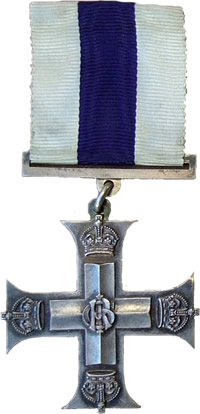
(Level 3 Gallantry Award)
Instituted by Royal Warrant on 28th December 1914.
The Military Cross was a decoration for gallantry during active operations in the presence of the enemy. individuals in the British Army, the Indian Army or the Colonial Forces. Commissioned officers with the rank of Captain or below or Warrant Officer were eligible for the award. From June 1917 officers of the rank of captain but who had a temporary rank of major could receive the award.
The reverse of the medal was issued plain with no engraving. Some families and individuals engraved their details at their own expense.
From August 1916 an individual could receive one or more Bars to the Military Cross. Recipients of the medal are entitled to use the letters M.C. after their name.
The Military Cross (M.C.) is the British Army equivalent of the Distinguished Service Cross (D.S.C.) and Distinguished Flying Cross (D.F.C.).
The Military Cross photographed here(3) was awarded to Lieutenant Ewart Alan Mackintosh of the 5th Battalion Seaforth Highlanders (51st Highland Division). Lieutenant Mackintosh, MC was the author of the poem ‘In Memoriam’ featured on this website at:
In Memoriam by Lt. E A Mackintosh, MCDistinguished Flying Cross (D.F.C.)
(Level 3 Gallantry Award)
Instituted on 3rd June 1918.
Awarded to officers and warrant officers of the Royal Air Force for an act or acts of valour, courage or devotion to duty while flying on active operations against the enemy.
A bar is added to the medal ribbon for subsequent acts of valour, for which a subsequent D.F.C. would be awarded. Recipients of the medal are entitled to use the letters D.F.C. after their name. The medal was issued with no inscription of the recipient's name.
During the First World War there were about 1,100 D.F.C. awards.
It is equivalent to the Distinguished Service Cross (D.S.C) for acts of valour at sea and the Military Cross (M.C.) for acts of valour on land.
This silver medal was designed by the medallist E Carter Preston. He was the winner of the design for the Next of Kin Memorial Plaque.
Air Force Cross (A.F.C.)
Instituted on 3rd June 1918.
The award was given to personnel of the British Armed Forces and other Commonwealth Forces for an act or acts of valour, courage or devotion to duty whilst flying though not in active operations against the enemy. Until after the Second World War Air Force Officers and Warrant Officers were eligible for the award. After the Second World War aviation officers in the Army and Navy were also eligible for the award. From 1993 all ranks were eligible for this award.
The medal was designed by the medallist E Carter Preston. He was the winner of the design for the Next of Kin Memorial Plaque.
Recipients were entitled to use the letters A.F.C. after their name.
Distinguished Conduct Medal (D.C.M.)
(Level 2 Gallantry Award)
Instituted on 4th December 1854.
The D.C.M. was the first official medal award to recognise an act of gallantry in the field by a member of the armed forces who was below the rank of officer. It was the other ranks' equivalent of the Distinguished Service Order.
The D.C.M. was awarded for gallantry in the field in the face of the enemy. Other ranks in the British Army and also non-commissioned ranks in Commonwealth Forces were eligible for this award.
The reverse of the medal bears the inscription “For Distinguished Conduct in the Field”. A bar carrying the date of a subsequent deed could be added to the ribbon until 1916 when the bar was changed to a laurel wreath. A recipient of the award is entitled to used the letters D.C.M. after their name.
The D.C.M. was discontinued as an award by the British Armed Forces in 1993, when the three awards of the D.S.O, the D.C.M. and the C.G.M. were replaced by the Conspicuous Gallantry Cross. The Conspicuous Gallantry Cross is now the second level gallantry award for all ranks of the British Armed Forces.
Conspicuous Gallantry Medal (C.G.M.)
(Level 2 Gallantry Award)
First instituted as a Royal Navy medal in 1855 and then fully instituted on 7th July 1874.
The Conspicuous Gallantry Medal (C.G.M.) was awarded to other ranks for an act of gallantry against the enemy at sea or in the air.
The reverse of the medal bears the inscription “For Conspicuous Gallantry”. An additional award for a subsequent deed would entitle the wearer to a silver laurelled bar. A recipient of the award is entitled to used the letters C.G.M. after their name.
The C.G.M. is equivalent to the British Army's Distinguished Conduct Medal (D.C.M.).
Distinguished Service Medal (D.S.M.)
(Level 3 Gallantry Award)
The D.S.M. was established on 14th October 1914.
It was an award for bravery whilst on active service at sea and was for other ranks' Royal Navy personnel, members of the other Services and other Commonwealth countries who held rank up to and including Chief Petty Officer.
On the reverse there was an inscription “For Distinguished Service”. Bars were awarded for subsequent actions and the date of the action during the First World War was given on the reverse of the bar. Recipients of the medal are entitled to use the letters D.S.M. after their name.
The Distinguished Service Medal (D.S.M.) is equivalent to the Military Medal (M.M.), the Distinguished Flying Medal (D.F.M.) and the Air Force Medal (A.F.M.).
Military Medal (M.M.)
(Level 3 Gallantry Award)
Instituted on 25th March 1916 (and backdated to 1914).
The Military Medal was awarded to other ranks of the British Army and Commonwealth Forces. It was an award for gallantry and devotion to duty when under fire in battle on land.
On the reverse of the medal is inscribed “For Bravery in the Field”. Recipients of the medal are entitled to use the letters M.M. after their name.
The Military Medal is the British Army equivalent of the Distinguished Service Medal (D.S.M.), the Distinguished Flying Medal (D.F.M.) and the Air Force Medal (A.F.M.).
Distinguished Flying Medal (D.F.M.)
Instituted on 3rd June 1918.
Awarded to other ranks of the Royal Air Force for an act or acts of valour, courage or devotion to duty while flying on active operations against the enemy. Later it was available to the equivalent ranks in the Army and Royal Navy for acts of valour in the air.
Recipients of the medal are entitled to use the letters D.F.M. after their name. A subsequent award receives a silver bar with an eagle in the centre of it.
It is equivalent to the Distinguished Service Medal (D.S.M.) for acts of valour at sea, the Military Medal (M.M.) for acts of valour on land and the Air Force Medal (A.F.M.).
The medal was designed by the medallist E Carter Preston.
Air Force Medal (A.F.M.)
Instituted on 3rd June 1918.
The award was given to personnel of the British Armed Forces and other Commonwealth Forces for an act or acts of valour, courage or devotion to duty whilst flying though not in active operations against the enemy. Other ranks were eligible for the award.
Recipients were entitled to use the letters A.F.M. after their name.
The Air Force Medal was designed by E Carter Preston. He was the winner of the design for the Next of Kin Memorial Plaque.
Meritorious Service Medal (M.S.M.)
Instituted in 1845 (British Army), in 1849 (the Royal Marines), in 1918 (the Royal Air Force) and in 1919 (the Royal Navy).
The criteria for eligibility was different for each of the above Services and the number of medals issued was also restricted within each of the Services.
Army
Originally the award was for meritorious service by Non-Commissioned Officers. Between 1916 and 1919 a Royal Warrant amended the eligibility of the award so that Non-Commissioned Officers could be awarded the M.S.M. in the field.
Royal Marines
Originally the M.S.M. was awarded for gallantry or distinguished service. Between 1916 and 1919 Non-Commissioned Officers could be awarded the M.S.M. in the field.
Royal Air Force
The M.S.M. was awarded for meritorious service by ground crew.
Royal Navy
The M.S.M was awarded for gallantry not in the face of the enemy and for meritorious service by petty officers and senior naval ratings.
Mentioned in Despatches (M.I.D.)
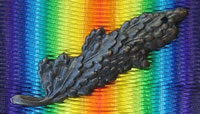
“Mentioned in Despatches” is not an award of a medal, but as a commendation of an act of gallantry it is included in this listing.
To be “Mentioned in Despatches” is when an individual is mentioned by name and commended for having carried out an noteworthy act of gallantry or service. A Despatch is an official report written by the senior commander of an army in the field. It would give details of the conduct of the military operations being carried out. From the time of the Boer War the Despatches were published in the London Gazette in full or in part. The phrase “Mentioned in Despatches” was used for the first time in a newspaper article by Winston Churchill (Morning Post, 6th October 1898) (4).
An individual could be mentioned in despatches more than once. As with the Victoria Cross, this commendation for an act of gallantry could be made posthumously.
In 1919 Army Order 166/1919 confirmed that individuals “Mentioned in Despatches” would receive a certificate. This included personnel of the British Navy, Army and Air Force, and Indian Dominion, Colonial, Egyptian Forces and members of the Red Cross, Y.M.C.A., Y.W.C.A. and British civilians male and female.
In 1920 Army Order 3/1920 authorized the issue of an emblem to signify that an individual had been “Mentioned in Despatches” between 4th August 1914 and 10th August 1920. A bronze oak leaf was issued and could be worn on the ribbon of the British Victory Medal.
M.I.D. Listing
Individuals who are Mentioned in Despatches are listed in The London Gazette. The Gazette can be searched online:
Website: www.london-gazette.co.uk/search
2nd Lieutenant Mackay
The Oak Leaf in the photograph(5) was awarded to 2nd Lieutenant Mackay of the 5th Battalion Seaforth Highlanders (51st Highland Division). He had accompanied Lieutenant E A Mackintosh, MC on a raid into the enemy trenches which had been the inspiration for Mackintosh's poem ‘In Memoriam’.
Inspiration for poem “In Memoriam”Citation for a Gallantry Award
A citation is a brief report providing details of the deed for which an award for gallantry has been granted to an individual.
A recommendation for a gallantry award was usually given by a commanding officer using Army Form W3121. When the award was granted these details were generally used to create the citation for the award. Unfortunately almost all the recommendation forms W3121 from the First World War were destroyed in enemy bombing in the Second World War.
The award of a gallantry or distinguished service medal and a Mention in Despatches was published in The London Gazette. However, only some of the announcements were printed with their citation. The following gallantry awards were, however, listed with a citation: The Victoria Cross (V.C.), the Distinguished Service Order (D.S.O.), the Military Cross (M.C.) and the Distinguished Conduct Medal (D.C.M.).
For information on where to find records of medals and citations see our page at:
British WW1 Medal Records 1914-1920Related Topics
Researching Medal Awards
Every individual who served in a theatre of war on active service between 1914 and 1920 was eligible for the award of a campaign medal. For information about the medal records and where you can view them go to our page at:
British Army WW1 Medal Records 1914-1920
Replica Medals & Medal Ribbons
Replacement replica medals, medal ribbons and a replica of the Next of Kin Memorial Plaque can be obtained. A highly recommended specialist military medals company is C & J Medals, based in Reading, Berkshire:
Website: www.cjmedals.co.uk
Acknowledgements
(1) Ministry of Defence Factsheet: Military Honours and Awards
(2) Historian John Glanfield has carried out x-ray tests and is author of Bravest of the Brave: The Story of the Victoria Cross.
(3) Photograph courtesy of Barry Jenkins.
(4) Article entitled Mentioned in Despatches (idea)
(5) Photograph courtesy of Barry Jenkins.

The image of the Distinguished Service Order (D.S.O.) medal is reproduced on this page courtesy of Robert Prummel and
the work is licensed under a Creative Commons
Attribution-Share Alike 3.0 Unported License. You are free
to share and make derivative works of the file under the conditions that you appropriately attribute it, and that you
distribute it only under a license identical to this one.
